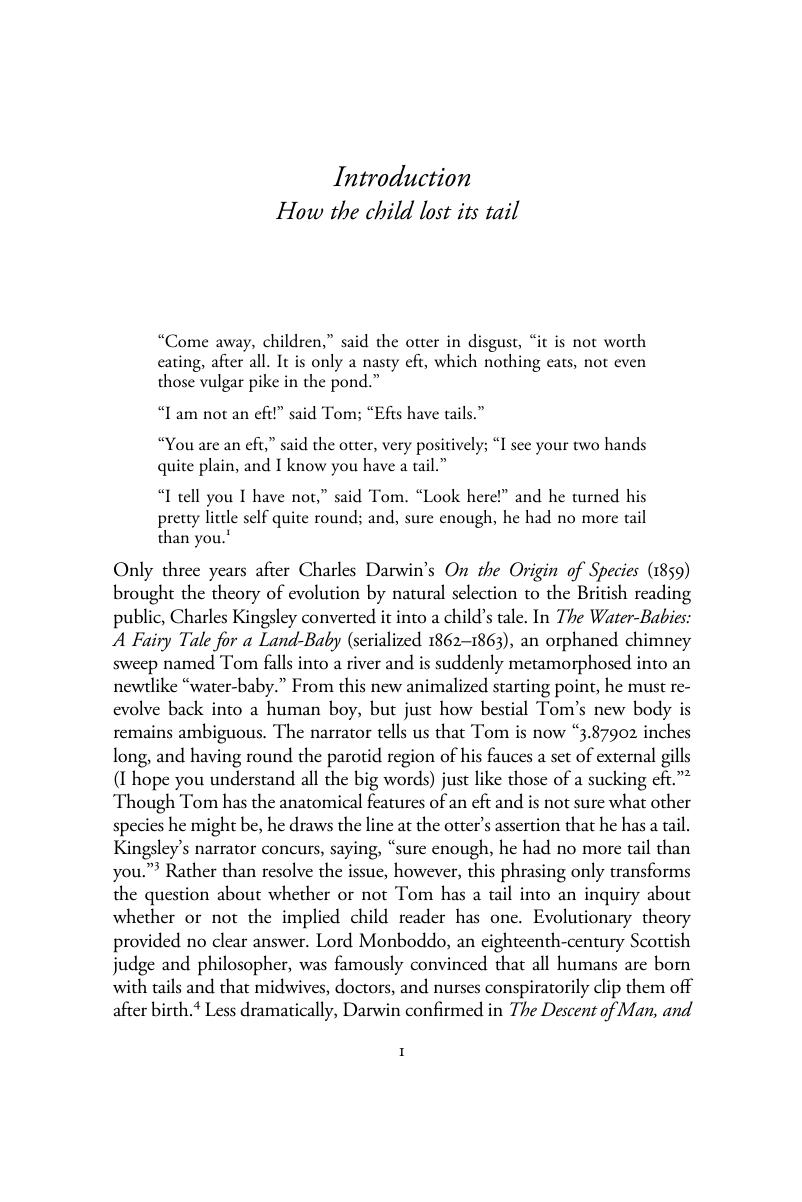Book contents
- Evolution and Imagination in Victorian Children’s Literature
- Cambridge Studies in Nineteenth-Century Literature and Culture
- Evolution and Imagination in Victorian Children’s Literature
- Copyright page
- Dedication
- Contents
- Figures
- Book part
- Introduction
- Chapter 1 The child’s view of nature
- Chapter 2 Amphibious tendencies
- Chapter 3 Generic variability
- Chapter 4 The cure of wild
- Chapter 5 Home grown
- Conclusion
- Notes
- Bibliography
- Index
- Cambridge Studies in Nineteenth-Century Literature and Culture
Introduction
How the child lost its tail
Published online by Cambridge University Press: 05 June 2016
- Evolution and Imagination in Victorian Children’s Literature
- Cambridge Studies in Nineteenth-Century Literature and Culture
- Evolution and Imagination in Victorian Children’s Literature
- Copyright page
- Dedication
- Contents
- Figures
- Book part
- Introduction
- Chapter 1 The child’s view of nature
- Chapter 2 Amphibious tendencies
- Chapter 3 Generic variability
- Chapter 4 The cure of wild
- Chapter 5 Home grown
- Conclusion
- Notes
- Bibliography
- Index
- Cambridge Studies in Nineteenth-Century Literature and Culture
Summary

- Type
- Chapter
- Information
- Publisher: Cambridge University PressPrint publication year: 2016



